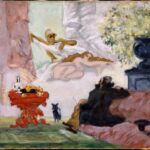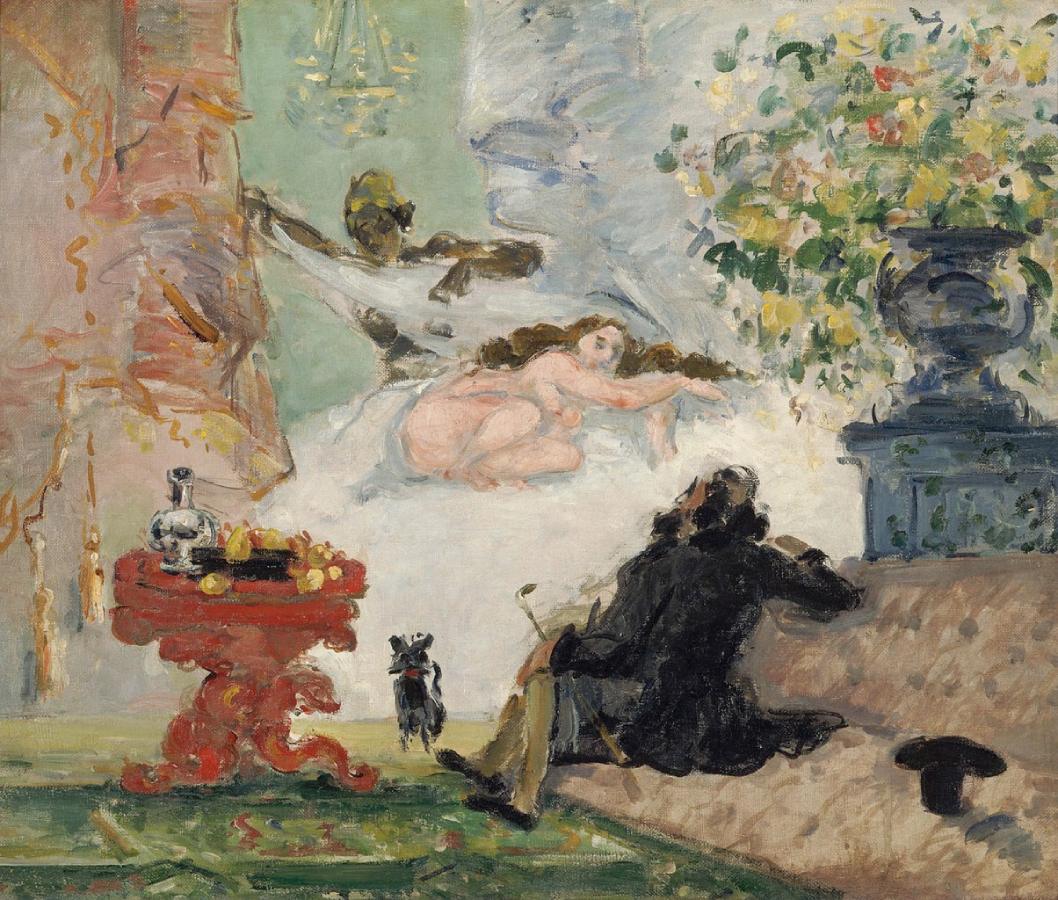Cézanne, Paul (1839-1906)
Une moderne Olympia (A modern Olympia)
1873–1874
Oil on canvas, 46.2 x 55.5 cm
Musée d’Orsay, Paris
Cézanne‘s early works, executed in dark colors, were strongly inspired by those of the Old Masters and by the compositions of Delacroix, Daumier and Courbet. Characteristic of this period, a painting from 1870 already showed Une moderne Olympia (private collection) in response to the large canvas by Manet which had caused a scandal at the Salon of 1865.
A few years later, Cézanne again tackled this theme, but this second version is quite different in its colors, luminous and dazzling, and in its brilliant execution, reminiscent of Fragonard‘s paintings. The way of Cézanne is then in full evolution towards impressionism. It would be during his stay in Auvers-sur-Oise with Doctor Gachet that, in the animation of a discussion, the painter would have seized his brush to create this colored sketch.
He thus delivers a much bolder interpretation of Manet‘s subject. The contrast between the nudity of the woman unveiled by her black servant and the elegant attire of the man dressed in black, who moreover strangely resembles Cézanne, who looks at her as a spectator, contributes to giving the scene an erotic and theatrical character. The effect is further accentuated by the presence of the curtain hanging on the left.
At the first Impressionist exhibition in 1874, this somewhat mind-blowing evocation received ridicule from the public and critics. In the review L’artiste of May 1, 1874, Marc de Montifaud writes: “like a voluptuous vision, this corner of artificial paradise, suffocated the bravest… and Mr. Cézanne appears only as a kind of madman, agitated painting delirium tremens”. (M’O)
Compare:
 Manet, Édouard (1832-1883)
Manet, Édouard (1832-1883)
Olympia
1863
Musée d’Orsay, Paris
Copy:
 Gachet, Paul (1828-1909)
Gachet, Paul (1828-1909)
Une moderne Olympia, copie d’après Cézanne
s.d.
Musée d’Orsay, Paris
